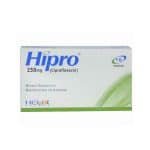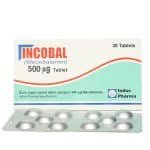delivery within 72 Hours
Hisopt Eye Drop
₨ 950
Generic: dorzolamide , timolol
Pack Size: 1
Product Form: Drop
Delivery within: 2 to 3 working days across Pakistan
Shipping & Delivery
-
Courier delivery
Our courier will deliver to the specified address
2-3 Days
From Rs 250
-
Free 15-Day returns

Black Friday Blowout!
Description
Hisopt Eye Drop is a combination medication containing two active ingredients: dorzolamide and timolol. Dorzolamide belongs to a class of medications called carbonic anhydrase inhibitors, while timolol is a beta-blocker. This combination is formulated to lower intraocular pressure (IOP) in individuals with open-angle glaucoma or ocular hypertension, conditions characterized by increased pressure inside the eye that can lead to vision loss if left untreated.
Ingredients:
- Dorzolamide: Dorzolamide works by inhibiting the enzyme carbonic anhydrase in the ciliary body of the eye, reducing the production of aqueous humor (the fluid inside the eye), which helps lower intraocular pressure.
- Timolol: Timolol is a beta-adrenergic receptor antagonist that decreases the production of aqueous humor by reducing the formation of cyclic AMP (cyclic adenosine monophosphate) in the ciliary processes of the eye, thereby lowering intraocular pressure.
Uses:
Hisopt Eye Drop is prescribed for the following purposes:
- Reduction of intraocular pressure: Hisopt Eye Drop is indicated for the lowering of intraocular pressure in patients with open-angle glaucoma or ocular hypertension, either as initial therapy or as adjunctive therapy when monotherapy is insufficient.
Side Effects:
While Hisopt Eye Drop is generally well-tolerated, some individuals may experience side effects, including:
- Ocular irritation or burning sensation
- Blurred vision
- Dry eyes
- Eye redness or itching
- Bitter taste in the mouth (due to dorzolamide)
- Systemic side effects associated with beta-blockers, such as bradycardia (slow heart rate), hypotension (low blood pressure), bronchospasm, or worsening of heart failure symptoms (rare)
If you experience any severe or persistent side effects, inform your healthcare provider promptly.
Precautions:
- Inform your healthcare provider about any pre-existing medical conditions, allergies, or medications you are currently taking before using Hisopt Eye Drop.
- Use Hisopt Eye Drop as directed by your doctor. Follow the dosage instructions provided and do not exceed the recommended frequency or duration of use.
- Remove contact lenses before instilling Hisopt Eye Drop and wait at least 15 minutes before reinserting them, as preservatives in the medication may be absorbed by soft contact lenses.
When Not to Use:
Hisopt Eye Drop should not be used in individuals with:
- Hypersensitivity or allergy to dorzolamide, timolol, or any components of the eye drop
- Severe chronic obstructive pulmonary disease (COPD) or asthma
- Sinus bradycardia (slow heart rate), second- or third-degree atrioventricular block, or cardiogenic shock
- Uncontrolled heart failure
FAQ:
- How should Hisopt Eye Drop be instilled? Tilt your head back, pull down the lower eyelid to create a small pocket, and instill the prescribed number of drops into the eye(s). Close your eyes gently and apply slight pressure to the inner corner of the eye for about 1-2 minutes to prevent the medication from draining into the tear duct and being absorbed systemically.
- Can Hisopt Eye Drop be used in children? The safety and efficacy of Hisopt Eye Drop in pediatric patients have not been established. Consult with a pediatric ophthalmologist for appropriate treatment options for children with glaucoma or ocular hypertension.
- How often should Hisopt Eye Drop be used? Hisopt Eye Drop is typically instilled into the affected eye(s) twice daily, as directed by your healthcare provider. Follow the prescribed dosing schedule consistently to achieve optimal therapeutic outcomes.
- Can Hisopt Eye Drop be used during pregnancy or breastfeeding? The use of Hisopt Eye Drop during pregnancy or breastfeeding should be discussed with a healthcare provider. The potential risks and benefits of treatment must be carefully weighed before initiating therapy in pregnant or breastfeeding individuals.
- Are there any drug interactions with Hisopt Eye Drop? Inform your healthcare provider about all the medications you are taking, including prescription, over-the-counter, and herbal supplements, to avoid potential drug interactions. Certain medications, such as oral beta-blockers, may interact with timolol and potentiate systemic side effects.
Customer Reviews
You must be logged in to post a review.







Reviews
Clear filtersThere are no reviews yet.